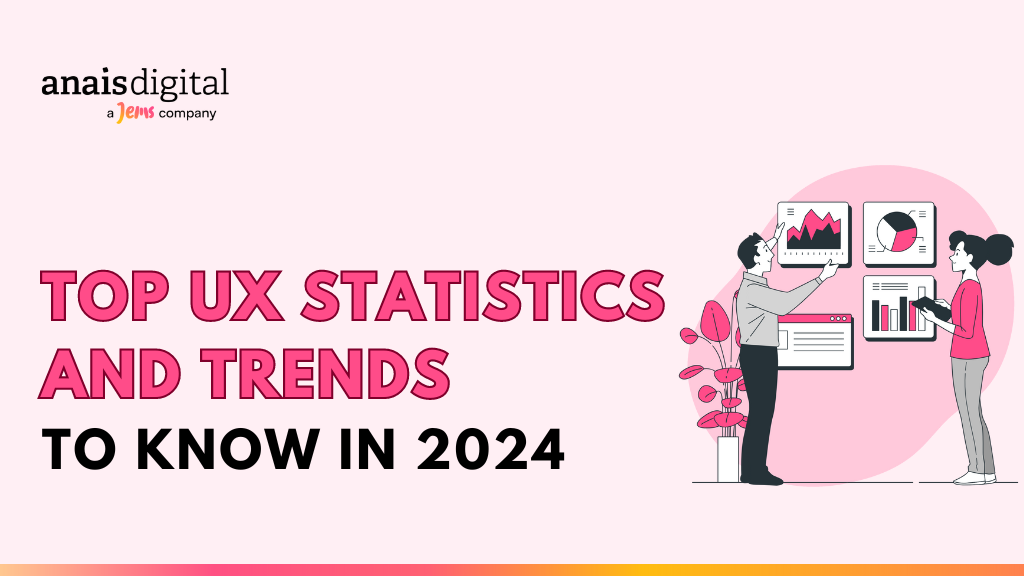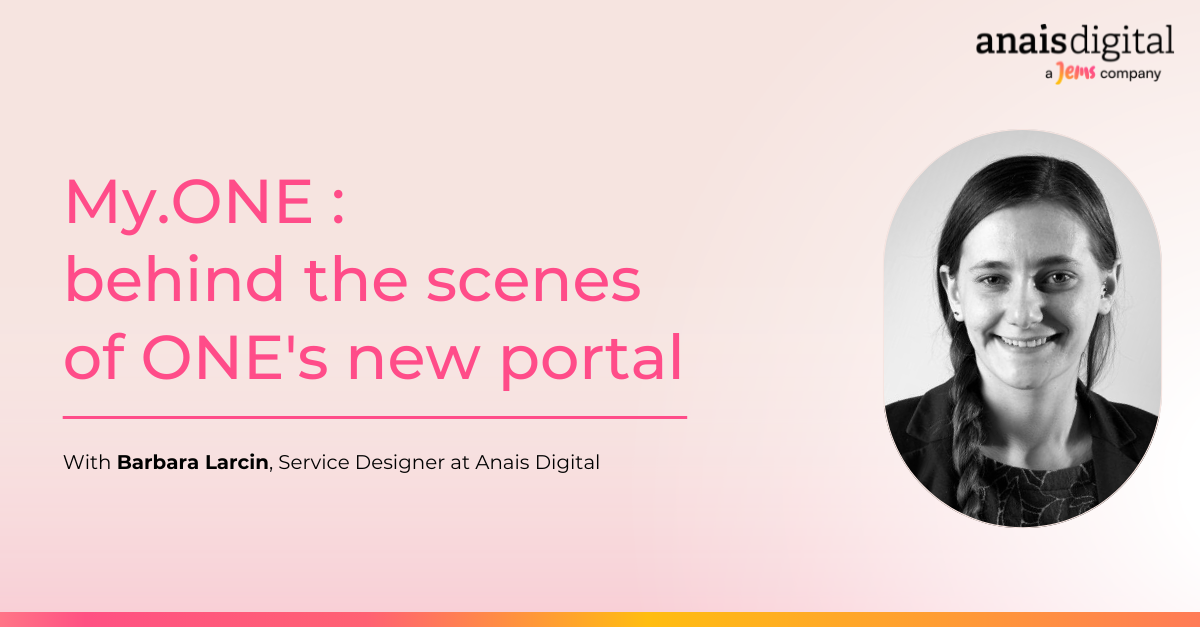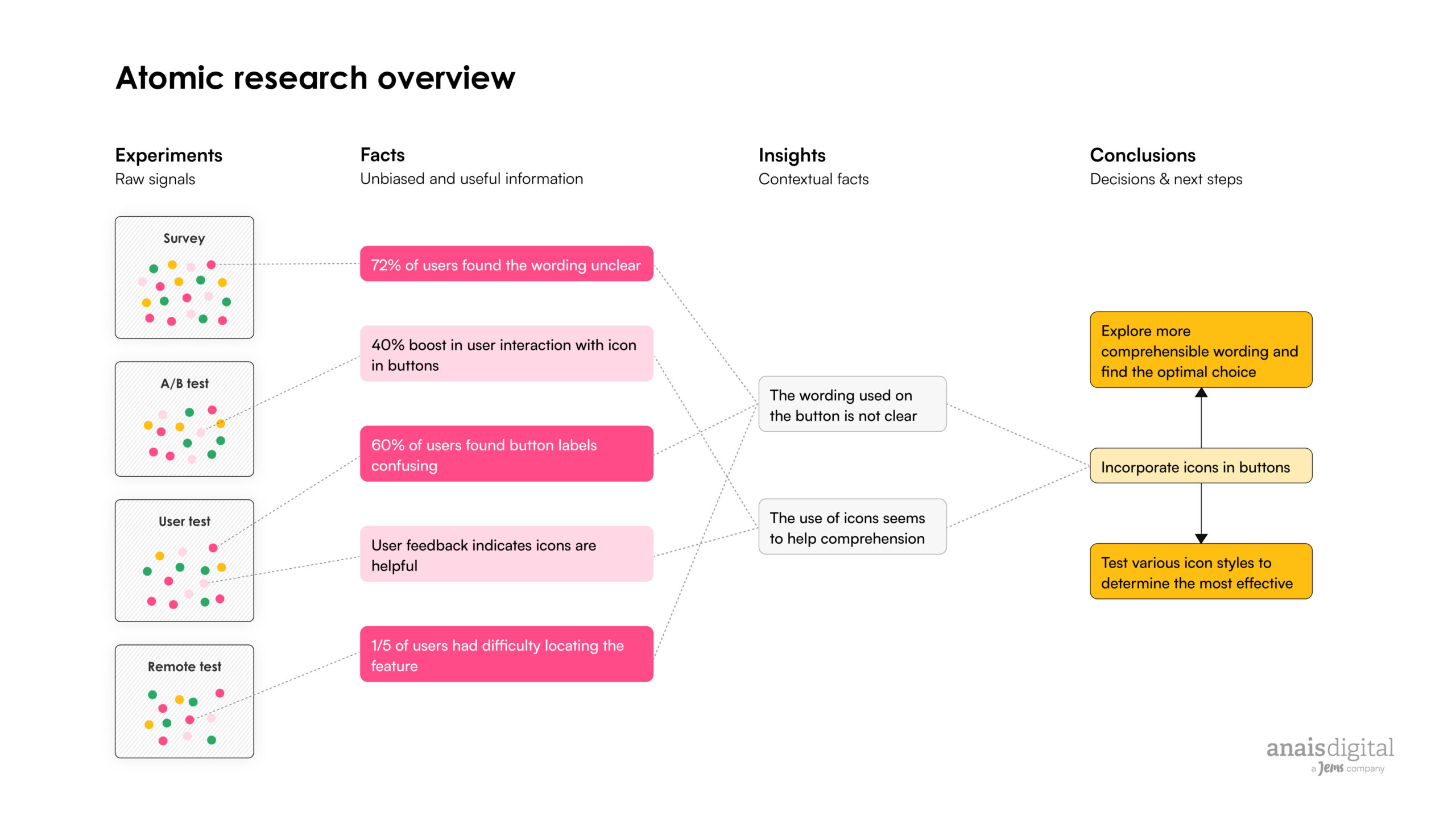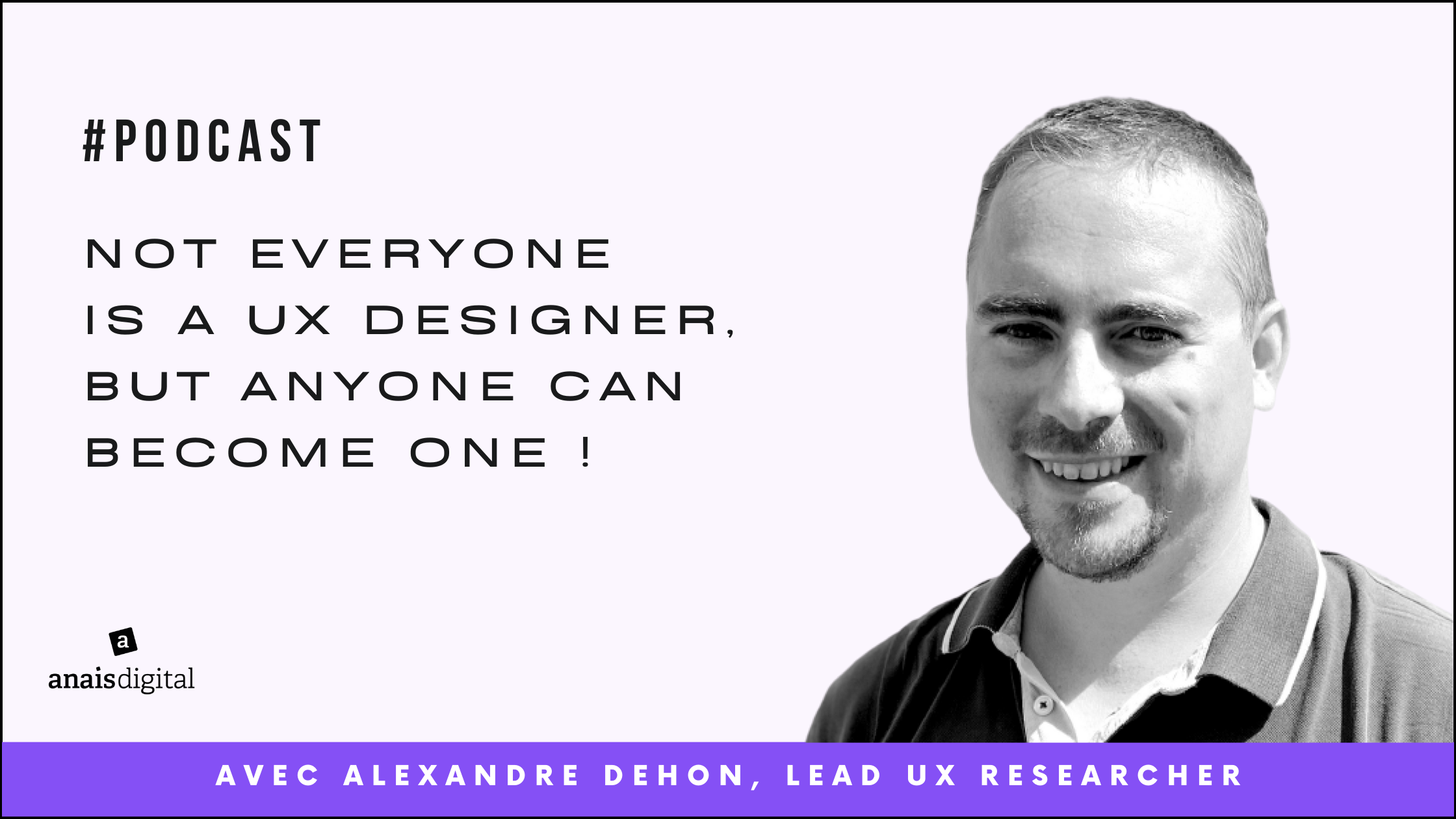Interview with Pauline Lagage, Senior UX Researcher at Anais Digital
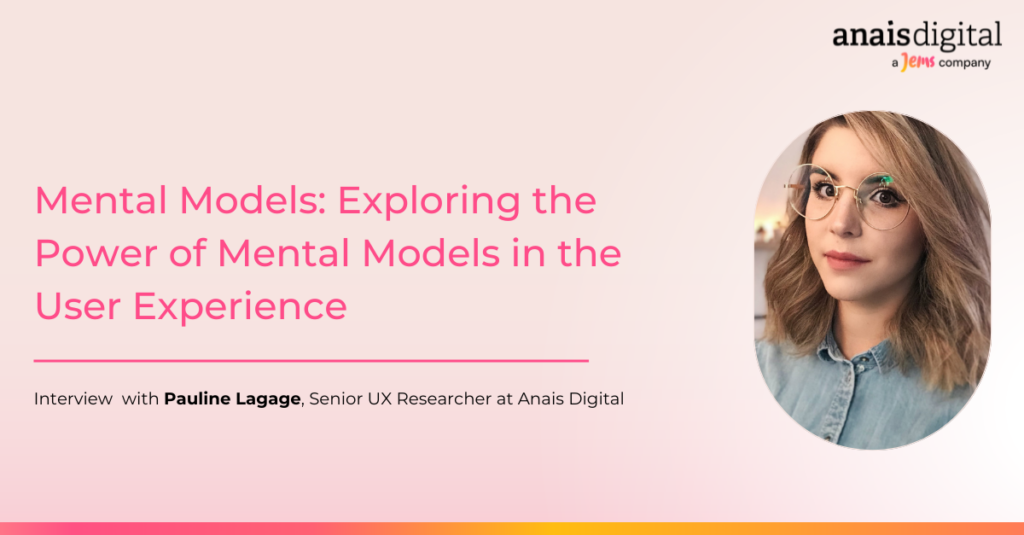
In the dynamic and evolving field of UX design, methodologies and tools are constantly being renewed to deliver increasingly personalized user experiences. Mental models are emerging at the heart of these innovations, establishing themselves as a key concept for understanding and improving the way users interact with products and services.
Senior UX Researcher Pauline Lagage, one of the few Belgian experts in this innovative field, shares with us the subtleties of mental models, how Anais Digital uses this powerful tool to help its clients, and how mental models can become a game-changer for UX projects.
Can you introduce yourself?
I’m Pauline Lagage, Senior UX Researcher at Anais Digital. My goal is to connect the voice of users with companies and projects in order to design user-centric products and services.
Can you explain what mental models are?
A mental model is a way of mapping the use of a product or service. The approach maps how a user interacts and identifies :
- challenges
- needs
- motivations
- points of friction
- opportunities for solutions
The user provides leads which are enriched with external solutions to create a complete mapping of the process, empathizing with the user.
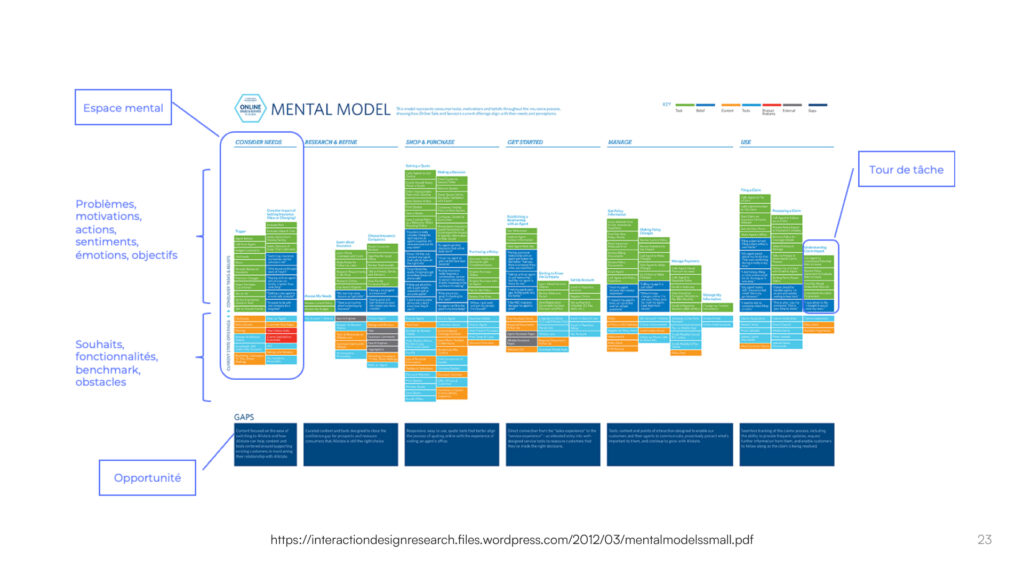
Can you talk about the importance of mental models in UX design?
It’s a research methodology that’s highly sought-after, complex and powerful.
A mental model provides a complete mapping of what a user thinks, how they act, and the weaknesses of the product, process or service. It also gives us solutions to these weaknesses.
It’s a deliverable that empathizes with users in the discovery phase of the UX process and guides the search for solutions, helping to create a roadmap for the project.
What tools and methodologies do you use to create and identify mental models?
The process begins with in-depth interviews with users, asking questions that dig deeper into the process. The questions start broad and gradually become more refined.
Once the interviews are over, we take standardized notes using a precise methodology and organize the information gathered into groups.
Once the groups have been created, we analyze the results and group them together several times to create the mental model mapping.
At the end of the process, the customer receives a complete mapping, a comprehensive summary, and an analysis of strengths and weaknesses.
This is a strict process, based on numerous studies.
Can you tell us about a specific case of using a mental model?
The STIB is a mental model we created at the very beginning of their website redesign process. This model identified the moments in a public transport user’s journey when he or she was unable to find the information he or she needed on the site.
It guided the first choices in the design of the website, influencing the architecture, content and mobile application. It also had an impact on the personas used at the STIB. These personas were applied to review all user paths throughout the STIB, beyond the digital space.

What are the challenges of mental models?
The biggest challenge is the complexity of the deliverable. The mappings generated are comprehensive and therefore sometimes difficult to understand. The biggest challenge is to present them clearly and (relatively) quickly. To achieve this, we have developed “executive summaries” which summarize the main points and are easier to distribute to the teams.
Is the mental model a new concept in UX? How do you see it evolving?
It’s not a new concept, but it’s one that’s really started to take hold fairly recently. In Belgium, Anais is one of the few agencies offering mental models based on a methodology from Indi Young. Her approach is so powerful that this tool will surely become more widespread in the years to come.
Ready to Transform Your UX Project with Mental Models?
FAQs : Mental models in UX
What is a mental model in UX?
A mental model in UX refers to an individual’s internal representation and understanding of how a system works, based on past experiences, knowledge and expectations. In UX design, understanding these mental models enables us to create interfaces that align with user expectations, guaranteeing intuitive, user-friendly experiences.
How can mental models be used in UX?
The use of mental models in UX involves :
- Conducting user research to understand user mental models related to a specific system or interface.
- Applying usability test results to identify and rectify discrepancies between the user’s mental model and the designed interface.
- Designing user interface elements based on common mental models, to ensure familiarity and ease of use.
What is an example of a mental model in the user interface?
A classic example is the “trash can ” icon used to delete files in computer interfaces. Users associate this visual metaphor with discarding or deleting, which stems from the actual action of throwing away garbage. This icon effectively exploits the user’s mental model of the trash can for deletions in the digital environment.
What’s the difference between a persona and a mental model in UX?
Although both are essential in UX, they have distinct objectives. A persona is a fictional character representing different types of users and their demographics, goals and behaviors. In contrast, a mental model focuses on users’ thought processes, their internal representation of how something works, and their expectations based on past experience.
Why is it essential for designers to understand users’ mental models?
By understanding users’ mental models, designers can create interfaces that meet user expectations, reducing confusion and cognitive load. This facilitates the user journey, improves satisfaction and reduces the risk of usability problems.
Are mental models static or do they evolve?
Mental models are dynamic. They evolve in line with new experiences, learning and interactions with different systems and technologies. When users are exposed to new interfaces and concepts, their mental models adapt accordingly.



